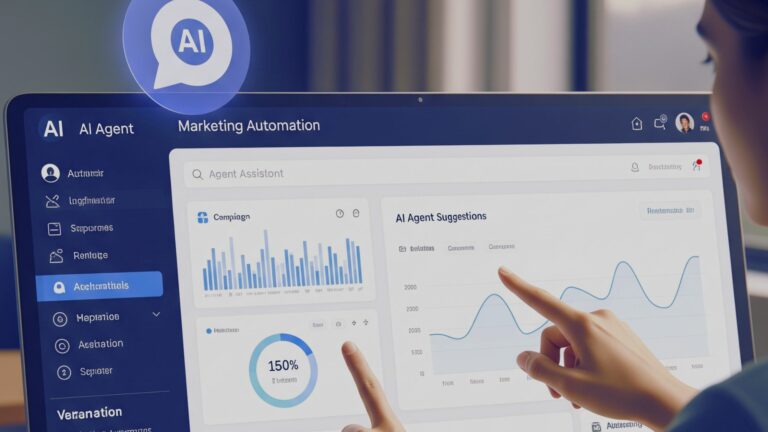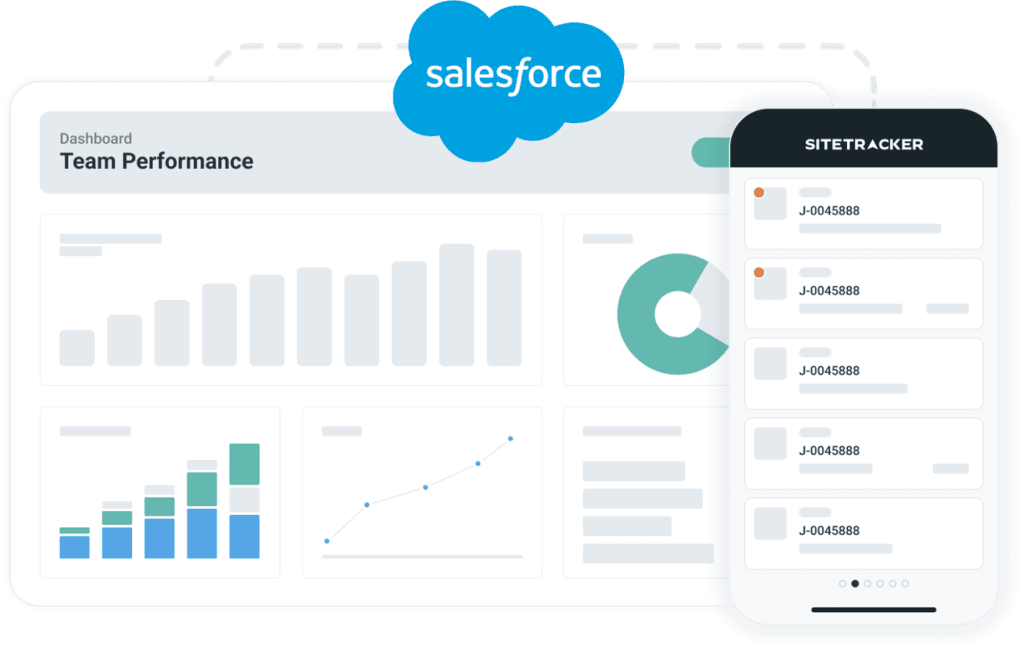In today’s manufacturing landscape, leaders face persistent challenges: supply chain disruptions, production inefficiencies, skilled labour shortages, and rising customer expectations. But what if these constraints could be overcome? What if manufacturing operations could anticipate problems before they occur, adapt in real time, and deliver unprecedented value?
The numbers speak for themselves: 98% of manufacturers have initiated their digital transformation journey, up from 78% in 2019, with technology investments now constituting 30% of manufacturers’ operating budgets, a rise from 23% the previous year. (Source: Deloitte 2025 Manufacturing Industry Outlook)
Welcome to our “What If?” series, where we explore how digital transformation is helping manufacturers transcend traditional limitations and reimagine what’s possible.
Digital Transformation in Manufacturing: The Connected Factory Becomes Reality
For decades, manufacturers have pursued the connected factory ideal—an environment where machines, systems, people, and data work in harmony. Today, this vision is becoming reality through digital transformation in manufacturing, driven by the convergence of key technologies.
- Industrial IoT: Sensors continuously monitoring equipment performance and conditions
- Cloud computing platforms: Providing the infrastructure to process vast amounts of operational data
- AI-powered intelligence: Transforming data into actionable insights and automatable decisions
- Integrated systems: Breaking down silos between production, inventory, supply chain, and customer data
AgentForce: The Intelligence Layer Driving AI in Manufacturing Transformation
At the center of this revolution is AgentForce, Salesforce’s AI-powered solution designed specifically for manufacturing environments. AgentForce doesn’t just collect data—it understands context, predicts outcomes, and takes or recommends actions.
Here’s what becomes possible when AgentForce powers your connected factory:
1. Predictive Rather Than Reactive Operations
What if your factory could anticipate equipment failures before they happen?
The traditional approach to maintenance has always been reactionary—fix equipment after it breaks. This leads to costly downtime, disrupted production schedules, and unpredictable maintenance expenses. AgentForce changes this paradigm completely.
AgentForce continuously analyzes equipment sensor data against historical performance patterns, identifying subtle indicators of potential issues days or weeks before traditional monitoring systems would detect a problem. This transforms maintenance from an emergency response function into a scheduled, strategic operation that minimizes disruption to your production flow.
2. Supply Chain Resilience
What if your supply chain could adapt automatically to disruptions?
Supply chain vulnerabilities have been exposed dramatically in recent years, with manufacturers struggling to maintain operations during shortages, logistical bottlenecks, and geopolitical tensions. A responsive supply chain is no longer just an advantage—it’s essential for survival.
By connecting your factory floor with Salesforce Supply Chain Management, AgentForce creates an intelligent network that monitors global supply conditions, evaluates risks, and recommends or even implements mitigation strategies—whether that’s sourcing from alternate suppliers, adjusting production schedules, or reconfiguring transportation logistics. This continuous intelligence enables your operation to adapt in real-time rather than scrambling to recover after disruption occurs.
3. Workforce Empowerment
What if every employee had AI-enhanced capabilities?
The manufacturing skills gap represents one of the industry’s most pressing challenges. Experienced workers are retiring, taking valuable institutional knowledge with them, while recruiting and training new talent remains difficult. AgentForce addresses this challenge by democratizing expertise across your workforce.
AgentForce serves as a force multiplier for your team. Technicians receive step-by-step guidance for complex repairs, accessing institutional knowledge that might otherwise be lost. Production managers get AI-generated insights on optimization opportunities that might take years of experience to recognize otherwise. Even new employees can perform at higher levels with AgentForce providing contextual information and recommendations through mobile interfaces, significantly accelerating their learning curve and productivity.
4. Quality Assurance Transformation
What if quality assurance could happen in real-time throughout production?
Quality has traditionally been managed through sampling and inspection at key checkpoints—an approach that can miss defects and lead to costly rework, warranty claims, or even product recalls. The connected factory fundamentally reimagines quality management as a continuous, preventive process.
Traditional quality control happens at designated checkpoints, often catching issues after substantial value has already been added to defective components. With AgentForce-enabled computer vision and sensor analytics, quality monitoring becomes continuous throughout the production process. Defects are identified instantly at their source, and processes automatically adjust to prevent recurrence—reducing waste, eliminating rework, and dramatically improving customer satisfaction through higher product quality and consistency.
Research confirms: Implementing predictive manufacturing analytics allows for real-time quality control, reducing defects and saving costs. (Source: Siemens Market Report) This approach transforms quality from a reactive inspection function to a proactive competitive advantage that improves margins while enhancing brand reputation.
The Integration Advantage: Salesforce Manufacturing Cloud
The connected factory becomes even more powerful when integrated with Salesforce Manufacturing Cloud. While operational improvements on the factory floor deliver significant value on their own, their impact multiplies when production systems connect seamlessly with customer-facing operations. This seamless connection bridges the gap between production and customer experience:
- Account-based forecasting: Align production planning with customer demand signals to optimize inventory levels and improve fulfillment rates
- Product and service performance tracking: Connect field service data back to manufacturing improvements, creating a continuous feedback loop for product quality and design
- Unified customer view: Give sales and service teams visibility into production status for accurate customer communications about order status and delivery expectations
- Automated compliance documentation: Streamline regulatory requirements with digital audit trails that reduce administrative burden while ensuring thorough documentation
This integration creates a single source of truth across manufacturing operations and customer relationships, eliminating information silos that have traditionally separated these domains. When production teams understand customer needs and customer-facing teams understand production realities, the entire organization can deliver a more aligned, responsive experience.
Getting Started: Your Digital Transformation Journey in Manufacturing
Digital transformation in manufacturing doesn’t require replacing all your existing systems overnight. The scale of change can feel overwhelming, but successful manufacturers approach transformation as a journey rather than a single massive project. The Salesforce platform is designed to integrate with your current technology investments while providing a clear path to a more connected future.
Many manufacturers begin their journey with these steps:
- Connect your data: Integrate production, inventory, and customer information to create a foundation for insights. Start by identifying the most critical data sources that impact your key performance indicators.
- Identify high-value use cases: Target specific pain points for initial implementation rather than trying to transform everything at once. Look for areas where small improvements can deliver significant ROI, such as reducing downtime for critical equipment or improving on-time delivery performance.
- Start small, scale fast: Begin with pilot projects that demonstrate value quickly, generating momentum and organizational buy-in. Use these early successes to refine your approach before expanding to additional use cases.
- Build digital capabilities: Develop the skills your team needs to thrive with new technologies. Invest in training and change management to ensure your workforce is prepared to leverage new tools effectively.
This pragmatic approach allows manufacturers to realize benefits quickly while building toward a comprehensive digital transformation. By focusing initially on specific use cases with measurable outcomes, you can demonstrate value, gain organizational support, and fund broader initiatives.
Conclusion: From “What If?” to “What’s Next?”
The question is no longer whether manufacturing can overcome its traditional limitations—it’s how quickly you’ll embrace the technologies that make it possible.
In our next installment of the “What If?” series, we’ll explore how digital transformation is revolutionizing product development and time-to-market. Subscribe to our newsletter to get each article delivered directly to your inbox.










